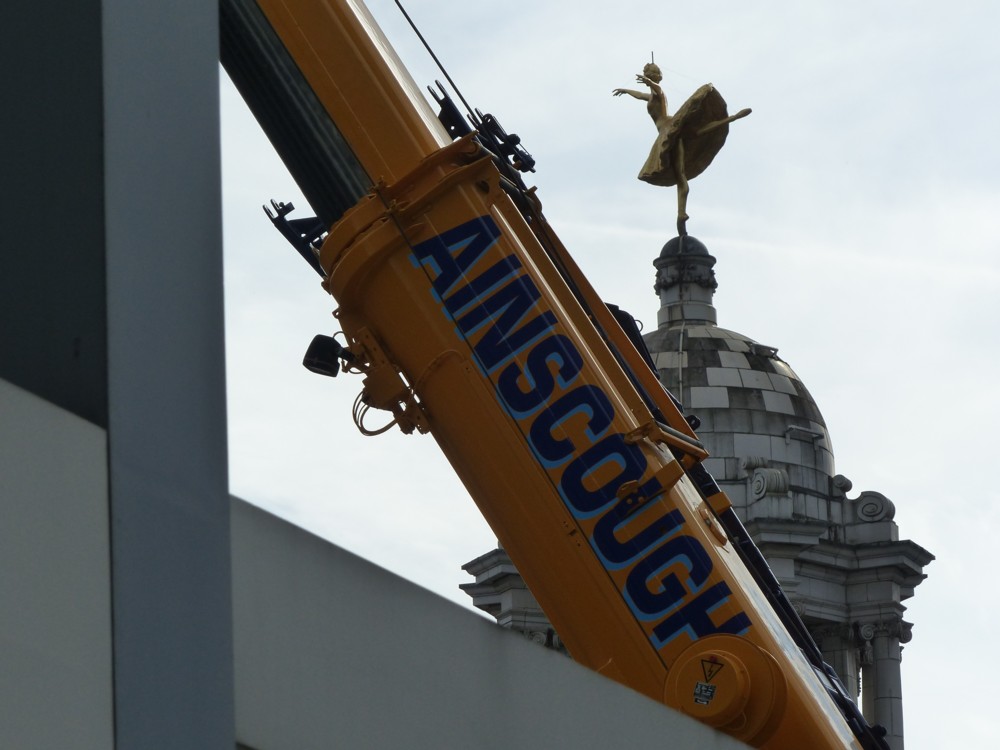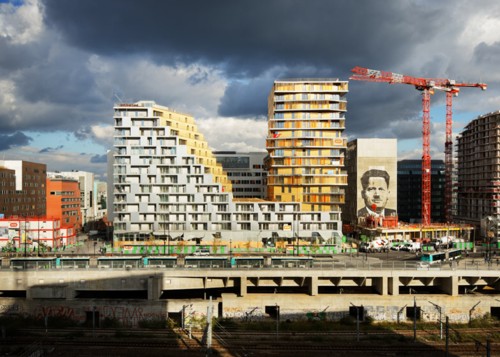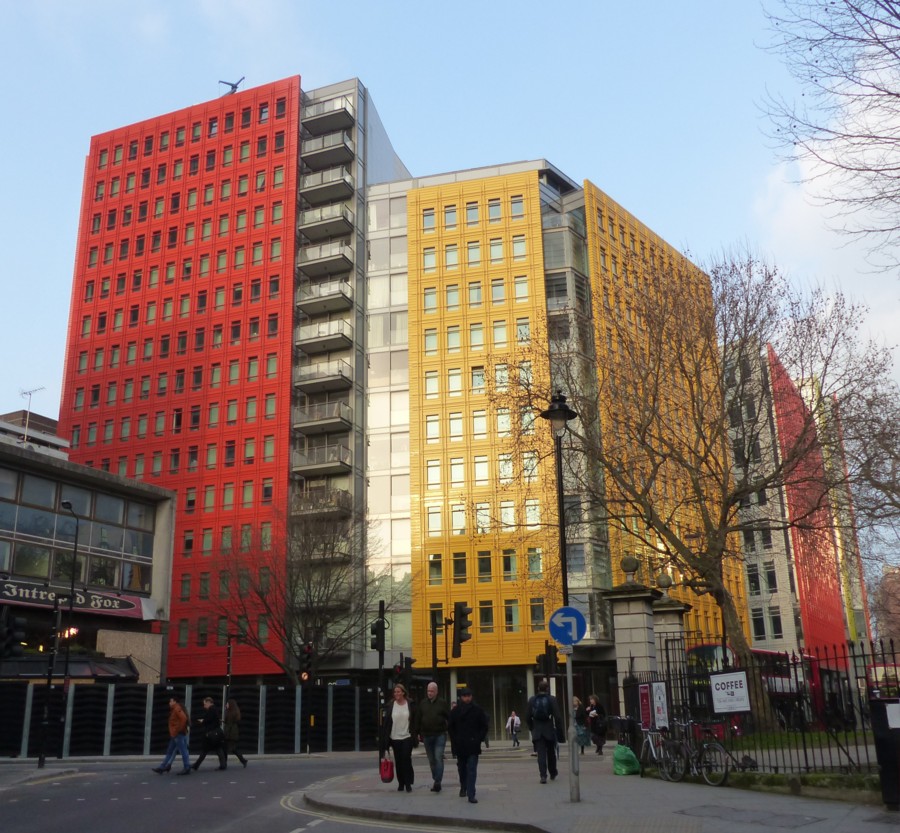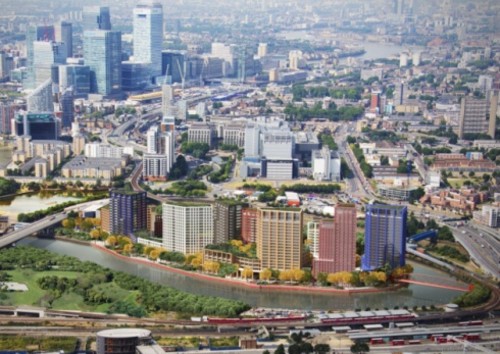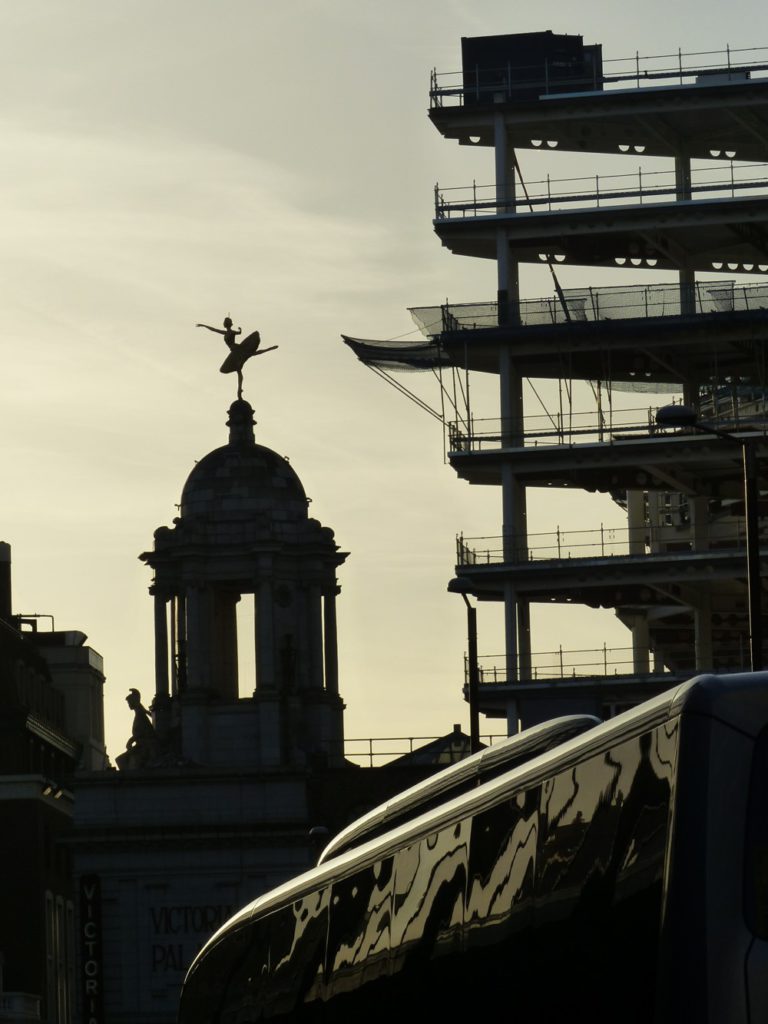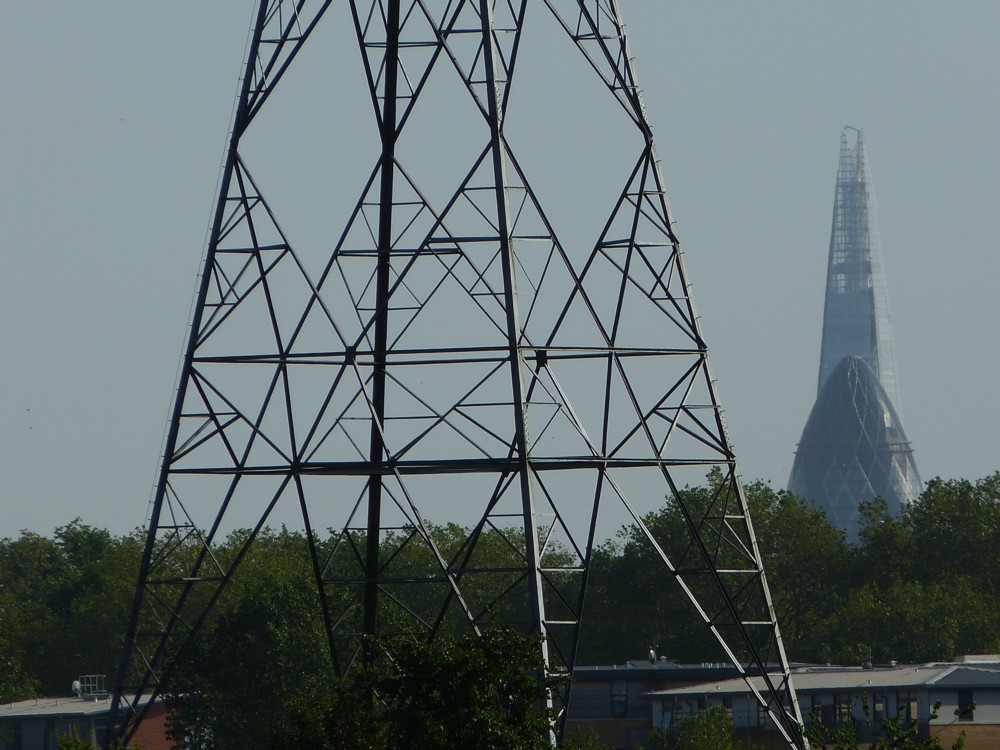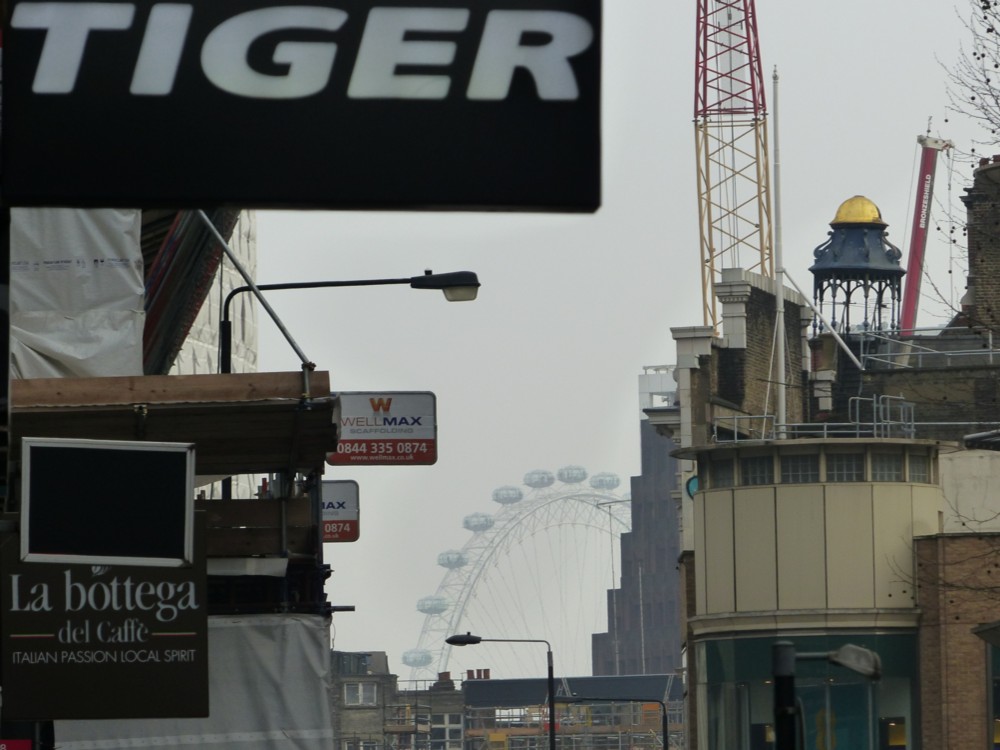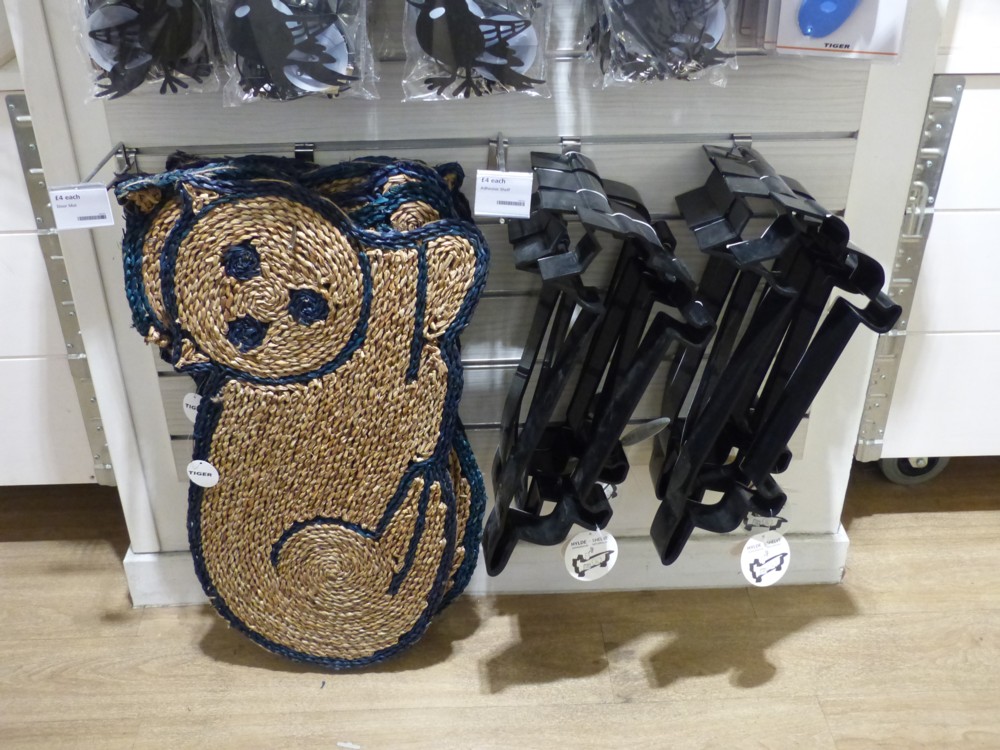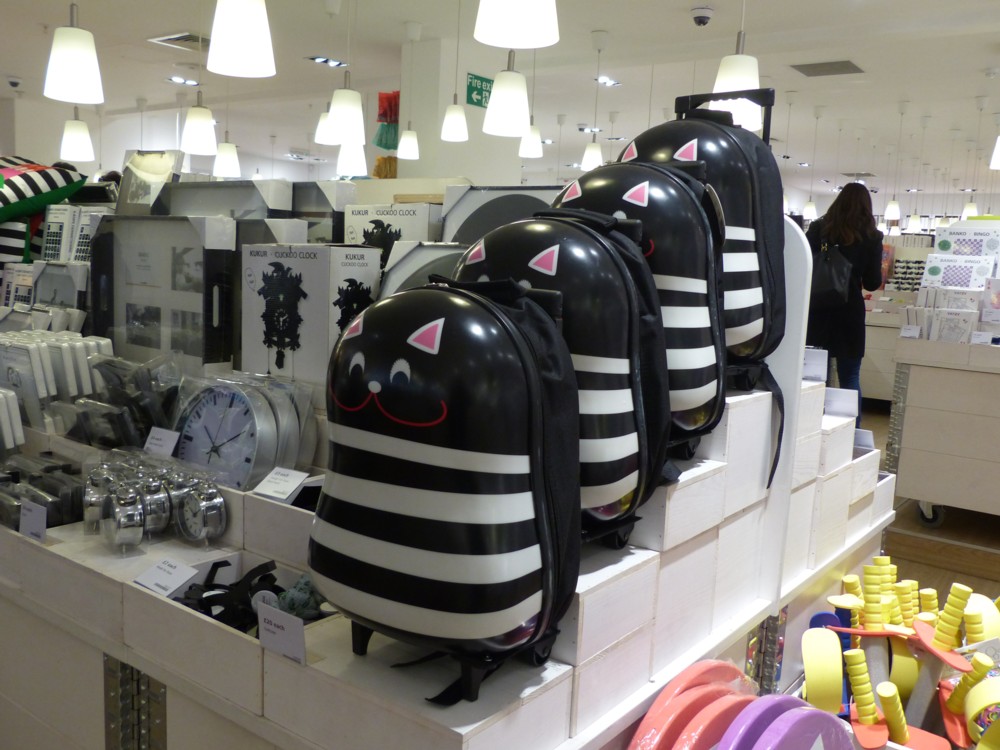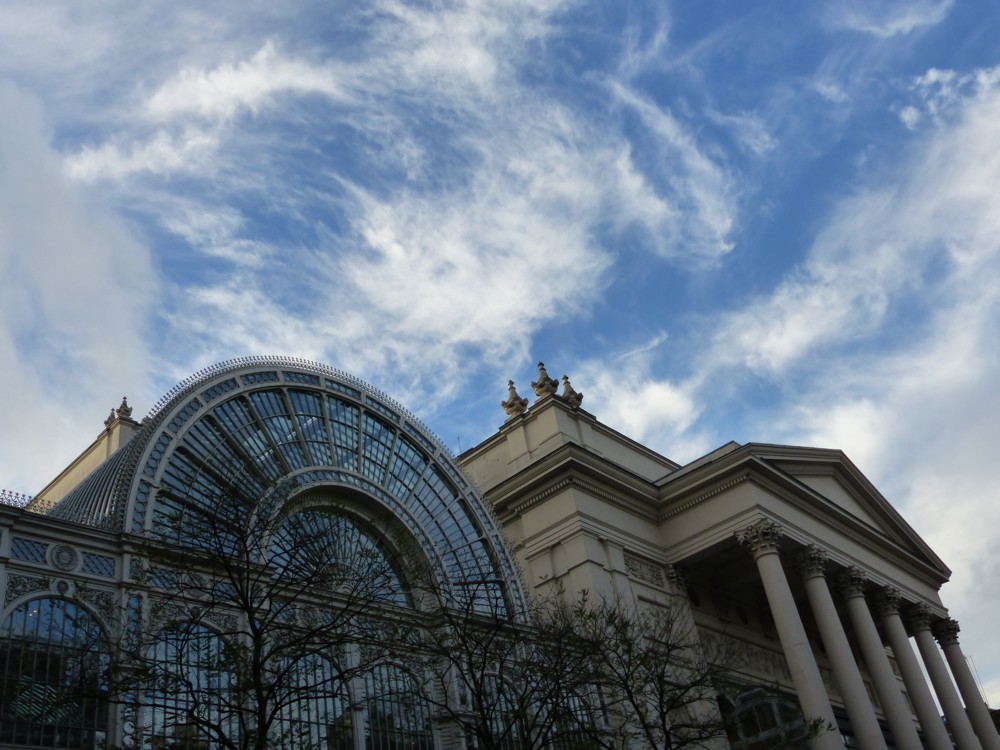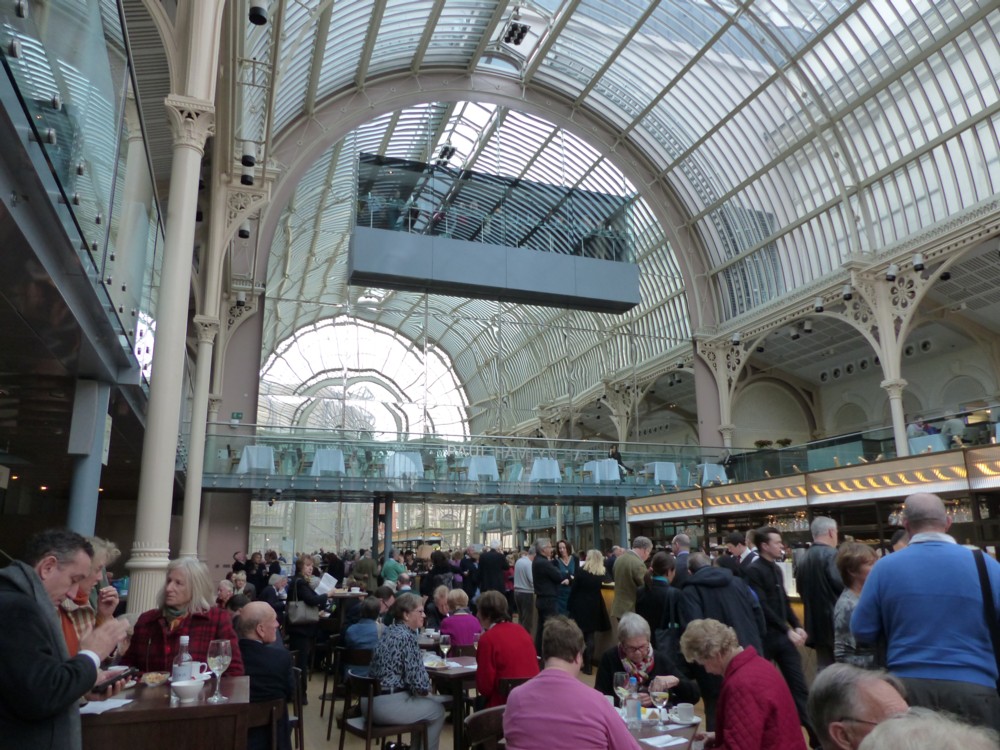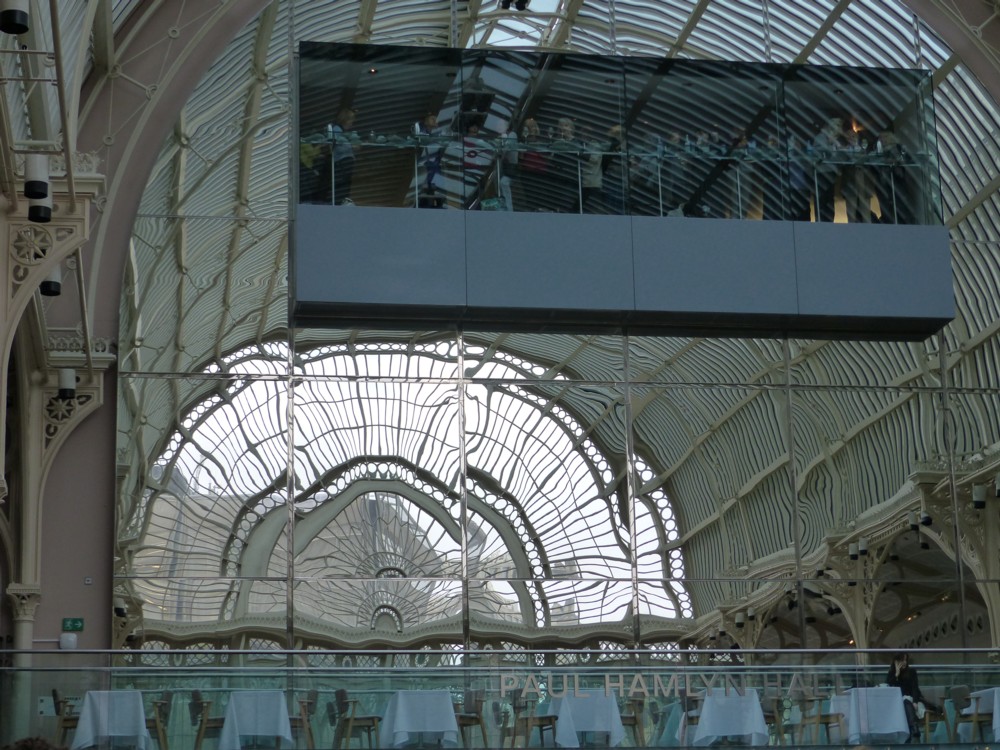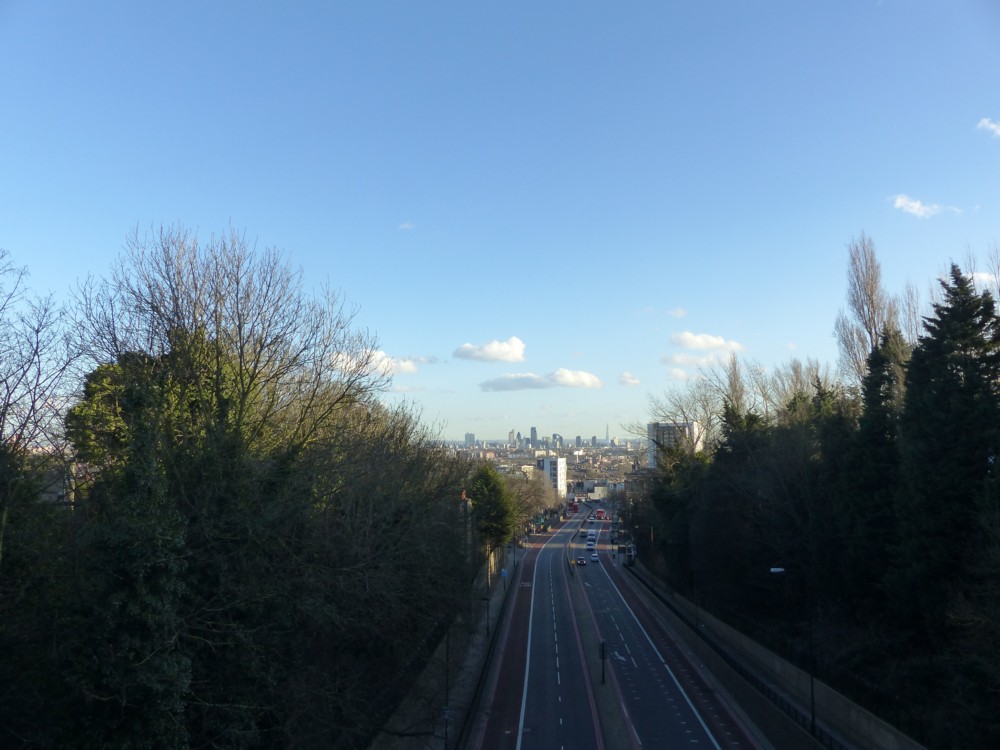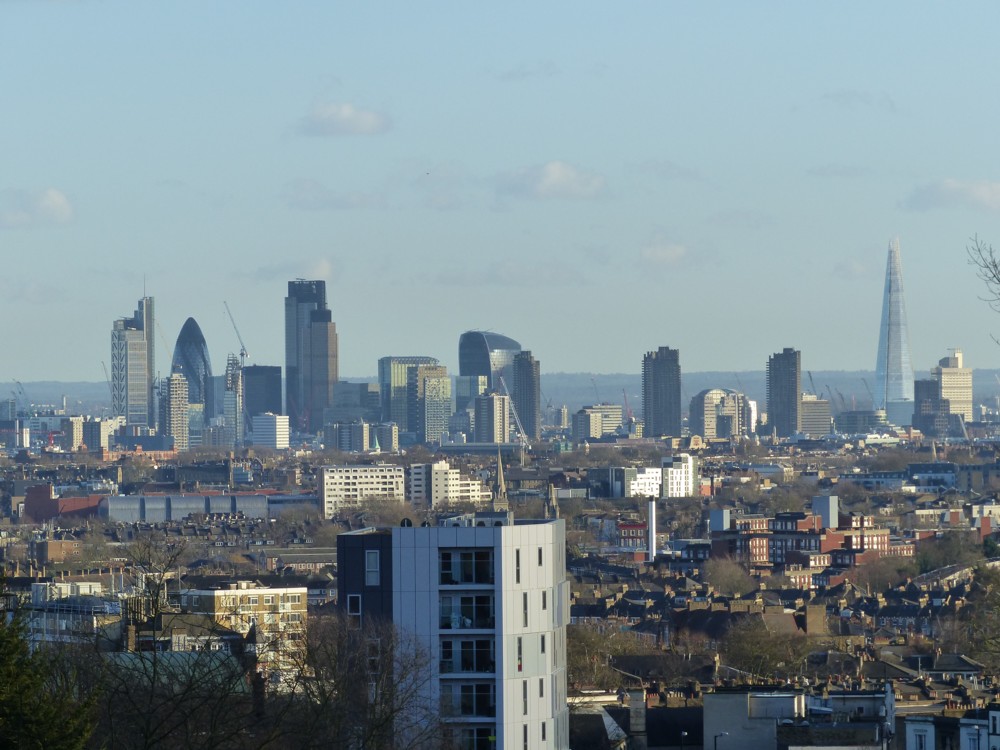I like trees without leaves for many reasons. One is that you can put them in front of Big Things and still see the Big Things.
And another is that without leaves in the way, I get to enjoy the peculiar sculptural effects contrived in and on trees by the pruning process.
Consider this photo, which I took this February, looking across Vincent Square towards Parliament and the river:
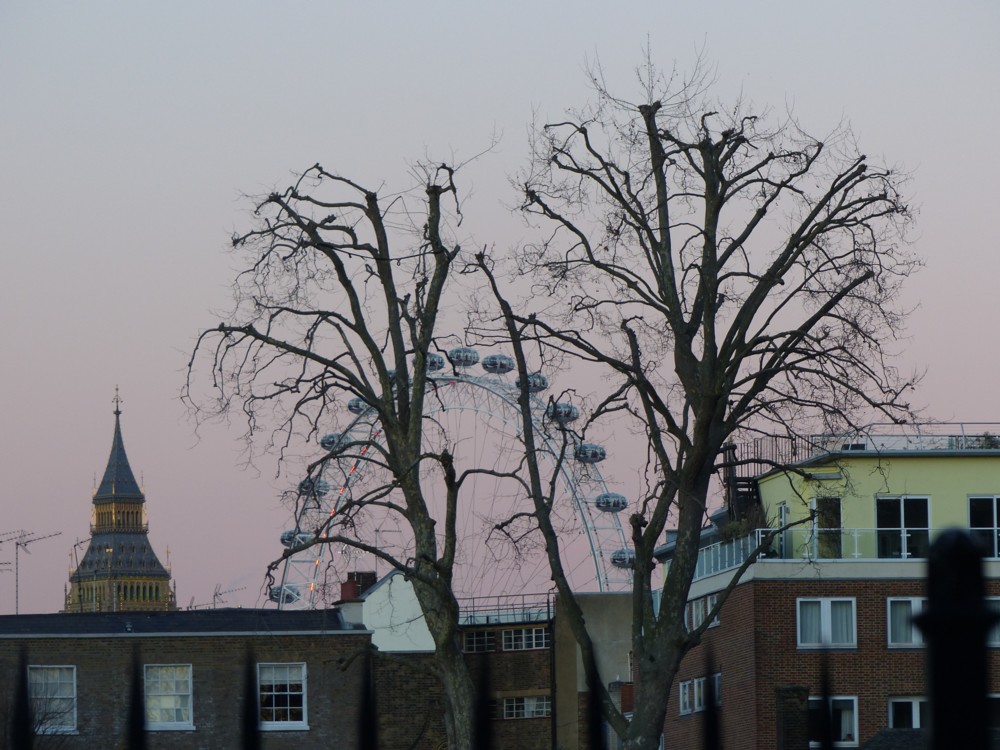
Ignore the wheel with the bobbles on it. Forget the pointy tower on the left. Consider those trees, and the strange shapes of their branches, caused by pruning.
A particular effect that such pruning causes is when a quite thick branch is lopped off, and the result is like a fist, holding lots more much thinner branches.
Here is another photo, taken down by the river in 2010, which shows that effect:
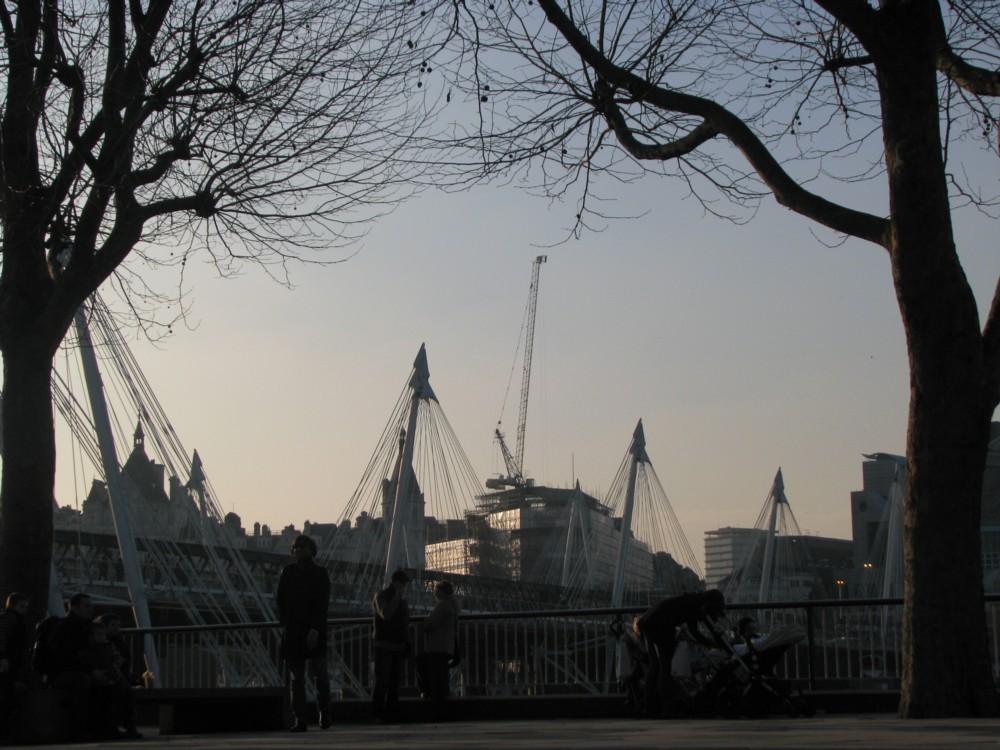
Again, forget about the spiky footbridge in the middle of the picture and that crane behind it, which is obviously what I thought I was photoing at the time, with the trees as a mere frame. Look at the trees, with their big thick branches, that suddenly stop (because of pruning) and then burst out in all directions with lots of much smaller branches.
The photo I’ve been able to track down in my archives that best illustrates this effect is of some trees at the junction between Rochester Row and Vauxhall Bridge Road:
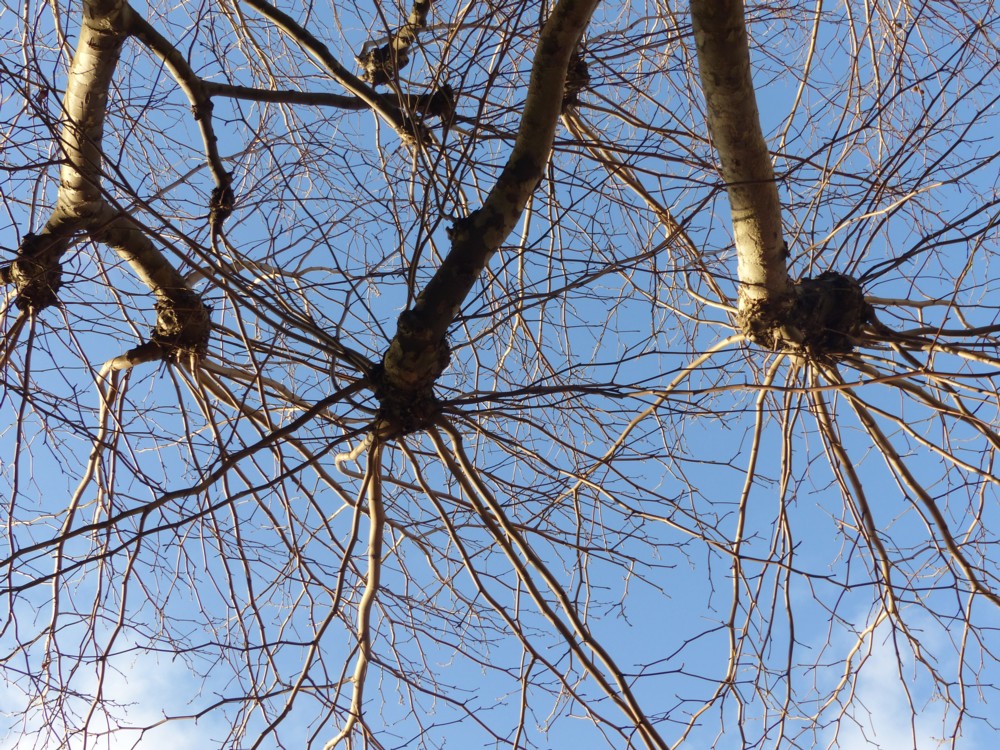
I seem to recall that Rochester Row has lots of trees thus truncated, which I also seem to recall photoing, several times. But I was unable to find any such photos.
What this particular snap shows very well is how the tree, once pruned, sometimes sort of blows the end of itself up into a balloon, before the new branches finally manage to burst out, hence the fist effect. I’m thinking especially of what happened on the right in the above picture.
The reason I went rootling through my archives for snaps of this sort was that when walking along beside the somewhat distant-from-London reaches of the New River, in the vicinity of Enfield, with GodDaughter One last Saturday, we encountered the most extreme example I have ever seen of a tree that has been pruned into a different shape to the one it would naturally have adopted.
Feast your eyes on this:
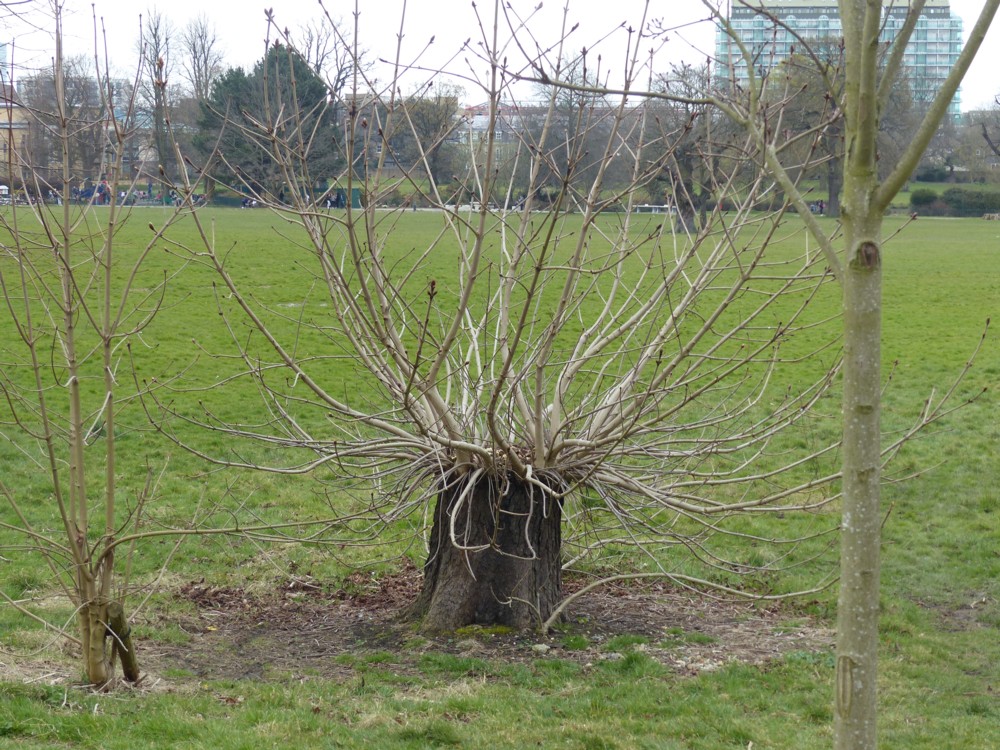
Is that not one of the weirdest things you have ever seen? It looks more like something for swimming in the sea than like a tree.
This snap was snapped at one of the entrances to Enfield Town Park, or Town Park as they call it in Enfield. You can see the New River in the background. Had we succeeded in sticking closer to the New River at that particular point in our wanderings, we would have missed this.
What was the pruner thinking, I wonder? Did he think that he had ended this tree’s growth? If so, shouldn’t he or someone have painted over the top, to stop it growing some more? Or, was he actually going for this effect? Was this some kind of experiment? Who can say? Whatever the explanation, I’m glad that this was done and that I got to photo, and to bring to the attention of the world, this remarkable effect.

